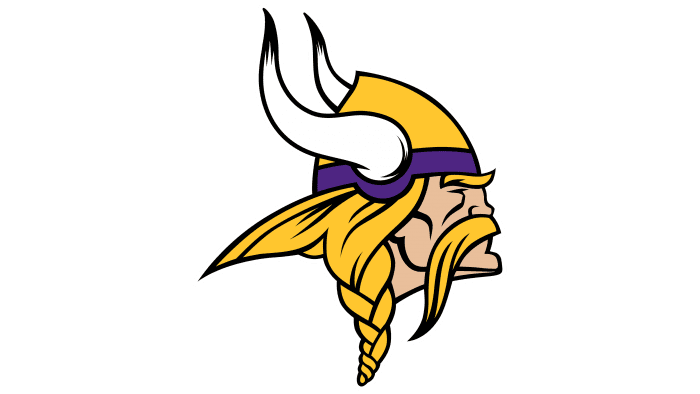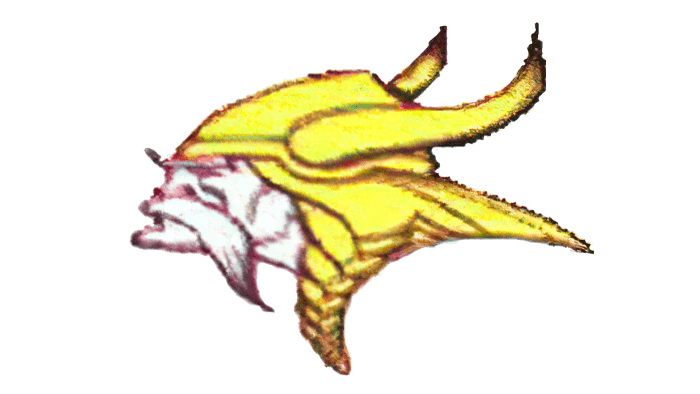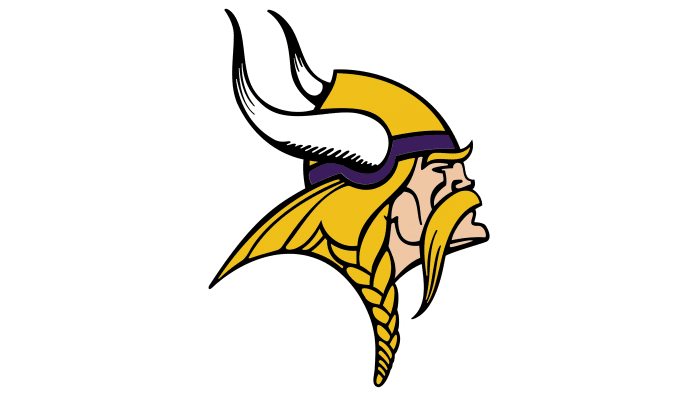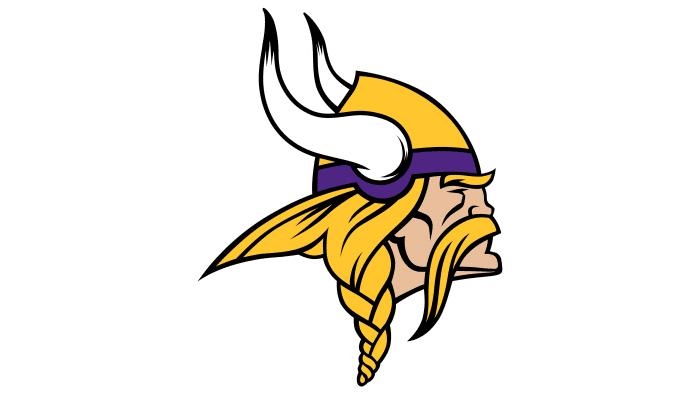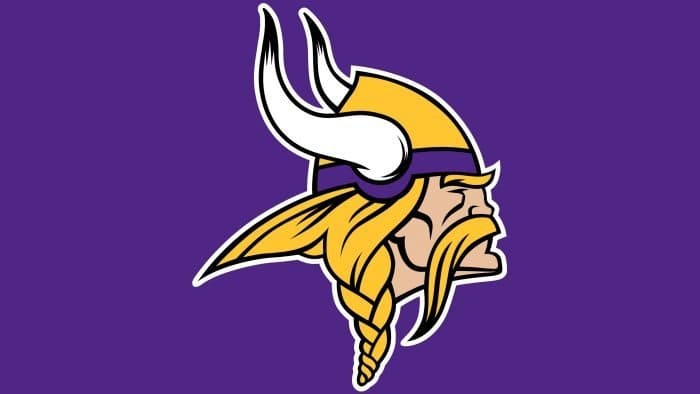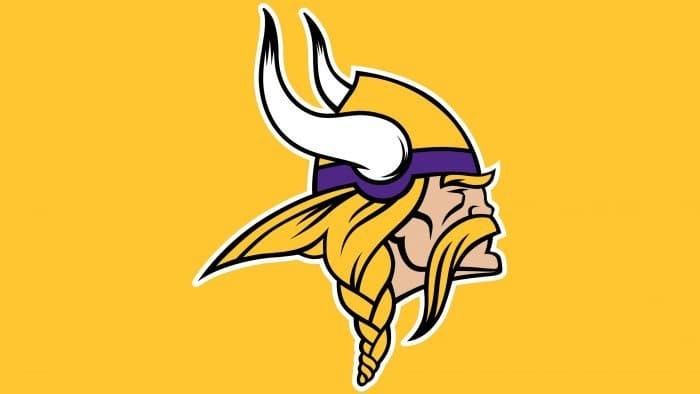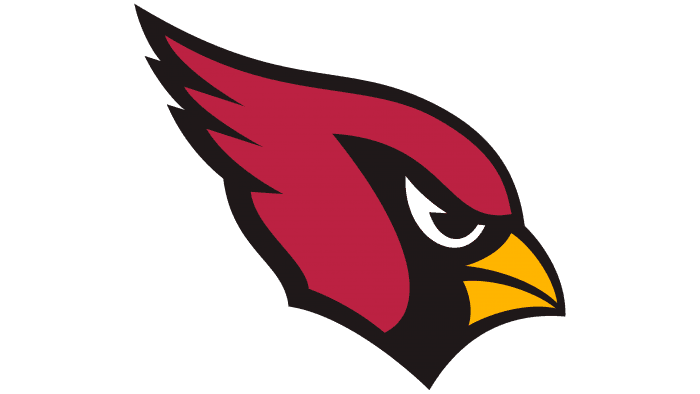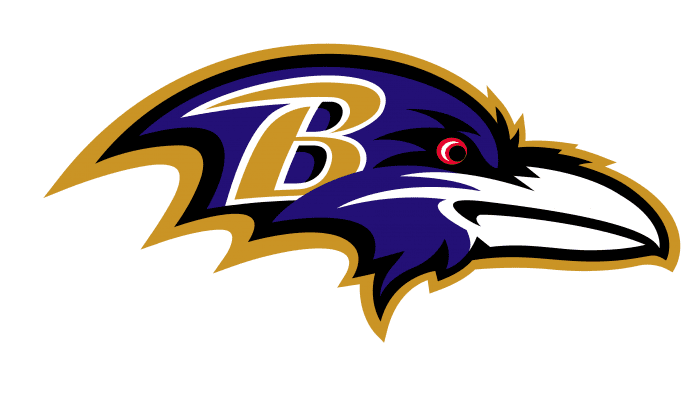The emblem of the “Minnesota Vikings,” featuring the head of a Viking, visually confirms the football club’s name. The emblem’s symbolism focuses on the name, origin, and characteristics inherent to the valiant Scandinavian warriors.
Minnesota Vikings: Brand overview
| Founded: | January 28, 1960 |
| Founder: | Zygi, Leonard, Mark Wilf |
| Headquarters: | Minneapolis, Minnesota, U.S. |
| Website: | vikings.com |
The Minnesota Vikings are a professional football team from the USA and a member of the NFL. They are part of the NFC’s Central Division of the Western Conference. The team is located in Minneapolis, Minnesota, and was established in 1960 as a franchise expansion.
A year after its establishment, the club joined the National Football League and has been a member ever since. The club’s first owners were a group of businessmen: Bill Boyer Sr., Bernie Ridder, Max Winter, Ole Haugsrud, and H.P. Skoglund. This group managed the franchise until 1972. Then Boyer left, and Haugsrud followed shortly after in 1976, leaving the team to the three founders.
In 1988, the number of “Minnesota Vikings” shareholders significantly expanded: Carl Pohlad and Irwin Jacobs joined Skoglund, Ridder, and Winter. From 1991 to 1998, Roger Headrick was the sole owner of the franchise. Later, he sold it to Red McCombs for $250 million. McCombs sold it to Zygi Wilf after an unsuccessful attempt to replace the Hubert H. Humphrey Metrodome stadium. Since 2005, the club has been owned by Wilf, five members of his family, and Reggie Fowler. They purchased it for $600 million.
The club received its official name immediately after its creation on September 27, 1960. General Manager Bert Rose recommended it to the board of directors. In his opinion, the name perfectly reflects Minnesota’s key essence – the Scandinavian tendency of local culture. It represents the Nordic restrained warrior with a steadfast will to victory. Thus, the team became the first to feature the state, not the city, in its name.
Meaning and History
The famous Minnesota Vikings logo, featuring a Norseman, was provided by Carl Hubenthal, a sports artist for the Angeles Times, in 1961. Throughout the franchise’s history, it had three logo versions, very similar to each other. The official logo colors are yellow (Vikings Gold), white, and black. Later, purple was added.
What are Minnesota Vikings?
“Minnesota Vikings” is a member of the NFC North in the NFL. Among all-league teams that have never won the Super Bowl, they lead in the number of victories. At the same time, they hold another record – the most losses in the playoffs. The football club was founded in 1960 in Minneapolis and has never moved from there.
1961 – 1965
This version of the “Minnesota Vikings” logo embodied the history and traditions of the ancient Vikings. It depicted a steadfast, brave warrior who feared no obstacles. His expression was one of determination, and all his facial muscles were tense. This symbolized his inner drive for victory. His eyes were squinted, and he looked intently forward. It seemed the Viking’s hair stood on end beside the horned helmet as a symbol of an innate thirst for war. The distinctive tail and helmet were drawn in a moderate sandy color, while the mustache and eyebrows were white. All elements were outlined in black.
1966 – 2012
In this logo, the “Minnesota Vikings” head was turned in the opposite direction – to the right. The image was made more realistic: the Viking had a natural skin color (beige-pink and light, typical for Norsemen), a golden mustache, and eyebrows (corresponding to the hair styled in a typical Viking fashion). A dark purple stripe was added to the helmet. The sharp horns remained white with a black tip. Strokes became clearer and more defined – emphasizing the intent gaze while removing the noise from the face.
2013 – today
In this logo, the Minnesota Vikings’ head was turned to the right. The image became more realistic: the Viking had a natural skin color (beige-pink and light, typical for Norsemen), a golden mustache, and eyebrows (corresponding to the hair styled in a typical Viking fashion). A dark purple stripe was added to the helmet. The sharp horns remained white with a black tip. Strokes became clearer and more defined – emphasizing the intent gaze while removing the noise from the face.
Minnesota Vikings: Interesting Facts
The Minnesota Vikings are a football team from Minneapolis, Minnesota, with a lot of history since they started in 1961.
- NFC Championships: They’ve been in the NFC Championship game many times, showing they’re a strong team. But they haven’t won a Super Bowl yet.
- Purple People Eaters: In the late ’60s and ’70s, their defense was so good that it earned them a scary nickname: “Purple People Eaters.” They were known for being tough on the other team’s offense.
- Stadium Changes: They used to play outside, then moved to an indoor stadium, and now play in the modern U.S. Bank Stadium, which shows how they’ve adapted over time, especially to Minnesota’s cold winters.
- Scandinavian Roots: Their name and look celebrate Minnesota’s Scandinavian culture. Even the “Skol” chant fans do at games comes from a Scandinavian word that means “cheers.”
- Famous Players: Some great players have been in the Pro Football Hall of Fame, like Fran Tarkenton, Alan Page, and Randy Moss.
- Miracle Plays: One of the most unforgettable plays was the “Minneapolis Miracle” in 2018 when Stefon Diggs scored a last-second touchdown to win a playoff game against the New Orleans Saints.
- Record Breakers: Vikings players have set many records, like Adrian Peterson running for 296 yards in one game in 2007, the most ever in the NFL.
- Dedicated Fans: Vikings fans are passionate, sticking with the team through good and bad times. The “Skol Chant” is a big part of games and brings everyone together.
- Playing in the Cold: As a throwback to their early days, they played outside for a few years while their new stadium was being built.
- Helping Out: The team does extensive community work with the Vikings Foundation, focusing on helping kids, improving communities, and supporting charities.
The Minnesota Vikings have a rich history with great players, memorable moments, and a close connection to their community, making them an interesting and loved team in the NFL.
Font and Colors
Minnesota Vikings is the first NFL team whose name bears the state, not the city. Moreover, its logo is also closely related to Minnesota, as it reflects the historical heritage of this administrative-territorial unit. The image of a Viking is part of the local culture, as a significant part of the state’s population consists of Norwegians. In a sports context, it symbolizes willpower, unwavering spirit, and the pursuit of victory.
The idea for the emblem belongs to artist Carl Hubenthal, who, in 1961, provided the club with a finished drawing: the image of a stern warrior’s head in a horned helmet. Special emphasis was placed on the long mustaches, eyebrows, and braided hair – characteristic features of Scandinavians.
Over time, designers changed the graphic sign, giving it a modern look. They turned the Viking to the right, emphasized the gaze, and brought the skin color closer to its natural shade. In 2013, the shape of the helmet’s horns was updated: developers achieved a three-dimensional effect, adjusting the fine details.
The absence of inscriptions is because the logo does not need additions – it is self-sufficient and fully corresponds to the Minnesota Vikings style. To make the image harmonious from an artistic point of view, designers paid attention to the correct shapes and proportions and selected colors. The resulting palette included light yellow for hair, mustaches, eyebrows, and the top of the helmet; blue for the lower part of the headgear; beige for the face; white for the horns; and black for the contours.
Minnesota Vikings color codes
| Purple | Hex color: | #4f2683 |
|---|---|---|
| RGB: | 79 38 131 | |
| CMYK: | 82 100 0 12 | |
| Pantone: | PMS 268 C |
| Gold | Hex color: | #ffc62f |
|---|---|---|
| RGB: | 255 198 47 | |
| CMYK: | 0 23 91 0 | |
| Pantone: | PMS 123 C |
FAQ
What does the “Minnesota Vikings” logo mean?
The Minnesota Vikings logo has no hidden meaning – it simply reflects the team’s name. It depicts the head of a Viking with long mustaches and braided hair. The Scandinavian warrior is recognizable by his characteristic helmet with horns.
Why is “Minnesota Vikings” called “Vikings”?
The name was given to the football club in 1960. It was meant to reflect the Scandinavian heritage of Minnesota, where many descendants of Scandinavians and northern countries reside.
Who designed the “Vikings” logo?
Bert Rose, the team’s general manager, commissioned the logo from sports cartoonist Carl Hubenthal, who was working at the Los Angeles Times newspaper at the time. This was the initial drawing, which was later modernized by other designers.
How many Vikings are in the Hall of Fame?
As of 2021, the Hall of Fame includes twenty “Minnesota Vikings” football players, one head coach, and one general manager. Among them, seven players spent only part of their careers with the “Vikings” and were inducted into the Hall of Fame due to their sports achievements with other teams.
